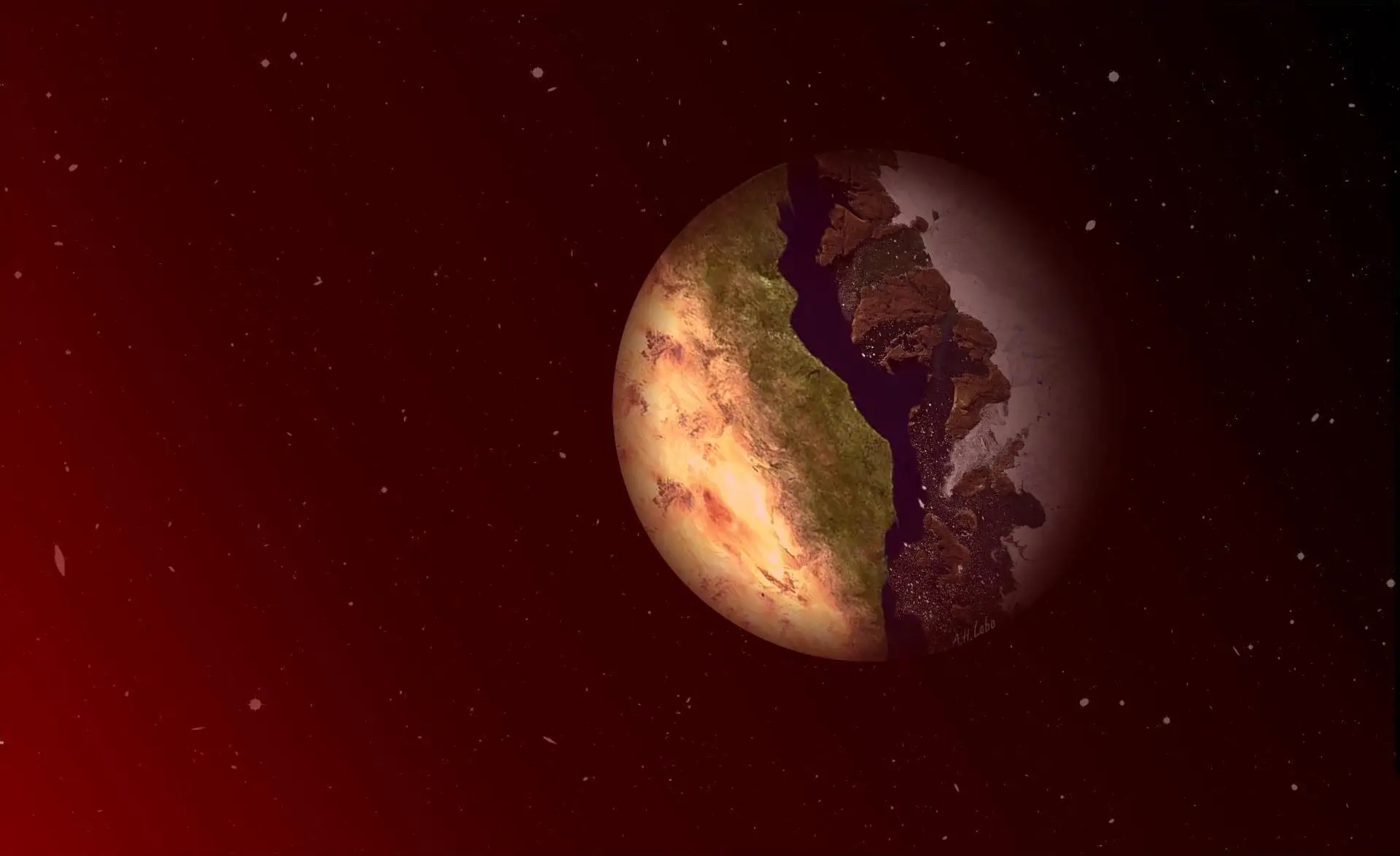Some exoplanets have one side permanently facing their star while the other side is in perpetual darkness. The ring-shaped border between these permanent day and night regions is called a “terminator zone.” In a new paper in The Astrophysical Journal, physics and astronomy researchers at UC Irvine say this area has the potential to support extraterrestrial life. Credit: Ana Lobo / UCI

These in-between regions could be prime sites for liquid water.
In a new study, University of California, Irvine (UCI) astronomers describe how extraterrestrial life has the potential to exist on distant exoplanets inside a special area called the “terminator zone,” which is a ring on planets that have one side that always faces its star and one side that is always dark.
“These planets have a permanent day side and a permanent night side,” said Ana Lobo, a postdoctoral researcher in the UCI Department of Physics & Astronomy who led the new work, which was just published on March 16 in The Astrophysical Journal. Lobo added that such planets are particularly common because they exist around stars that make up about 70 percent of the stars seen in the night sky – so-called M-dwarf stars, which are relatively dimmer than our sun.
The terminator is the dividing line between the day and night sides of the planet. Terminator zones could exist in that “just right” temperature zone between too hot and too cold.
“You want a planet that’s in the sweet spot of just the right temperature for having liquid water,” said Lobo, because liquid water, as far as scientists know, is an essential ingredient for life.
On the dark sides of terminator planets, perpetual night would yield plummeting temperatures that could cause any water to be frozen in ice. The side of the planet always facing its star could be too hot for water to remain in the open for long.
“This is a planet where the dayside can be scorching hot, well beyond habitability, and the night side is going to be freezing, potentially covered in ice. You could have large glaciers on the night side,” Lobo said.
Lobo, alongside Aomawa Shields, UCI associate professor of physics & astronomy, modeled the climate of terminator planets using software typically used to model our own planet’s climate, but with a few adjustments, including slowing down planetary rotation.
It’s believed to be the first time astronomers have been able to show that such planets can sustain habitable climates confined to this terminator region. Historically, researchers have mostly studied ocean-covered exoplanets in their search for candidates for habitability. But now that Lobo and her team have shown that terminator planets are also viable refuges for life, it increases the options life-hunting astronomers have to choose from.
“We are trying to draw attention to more water-limited planets, which despite not having widespread oceans, could have lakes or other smaller bodies of liquid water, and these climates could actually be very promising,” Lobo said.
One key to the finding, Lobo added, was pinpointing exactly what kind of terminator zone planet can retain liquid water. If the planet is mostly covered in water, then the water facing the star, the team found, would likely evaporate and cover the entire planet in a thick layer of vapor.
But if there’s land, this effect shouldn’t occur.
“Ana has shown if there’s a lot of land on the planet, the scenario we call ‘terminator habitability’ can exist a lot more easily,” said Shields. “These new and exotic habitability states our team is uncovering are no longer the stuff of science fiction – Ana has done the work to show that such states can be climatically stable.”
Recognizing terminator zones as potential harbors for life also means that astronomers will need to adjust the way they study exoplanet climates for signs of life, because the biosignatures life creates may only be present in specific parts of the planet’s atmosphere.
The work will also help inform future efforts by teams using telescopes like the James Webb Space Telescope or the Large Ultraviolet Optical Infrared Surveyor telescope currently in development at NASA as they search for planets that may host extraterrestrial life.
“By exploring these exotic climate states, we increase our chances of finding and properly identifying a habitable planet in the near future,” said Lobo.
Reference: “Terminator Habitability: The Case for Limited Water Availability on M-dwarf Planets” by Ana H. Lobo, Aomawa L. Shields, Igor Z. Palubski and Eric Wolf, 16 March 2023, Astrophysical Journal.DOI: 10.3847/1538-4357/aca970
Source: scitechdaily








